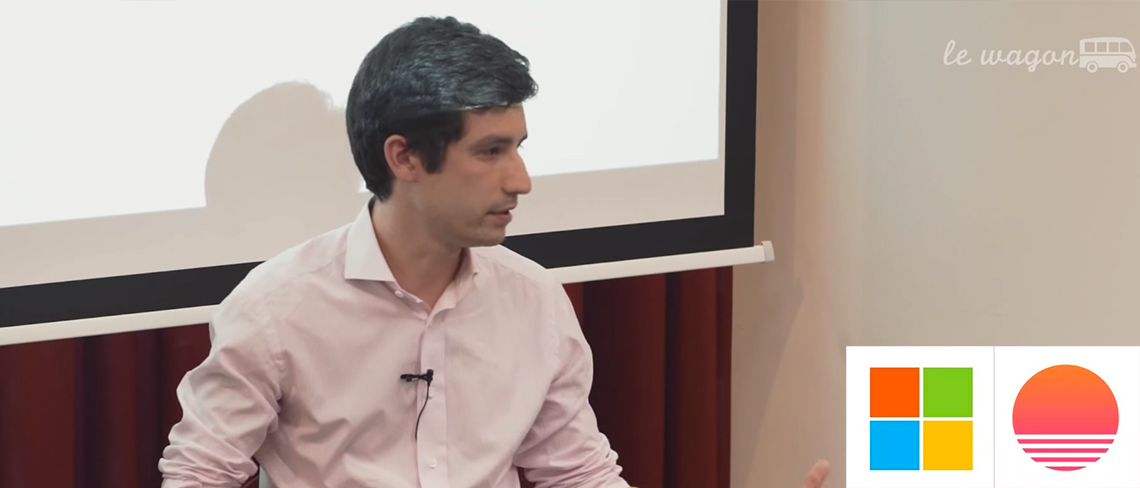What Large Companies Can Learn From Startups: the Microsoft-Sunrise case
 Big businesses are looking at startups for innovation and in particular practices. The lean startup movement has generated tons of content from which big companies can learn from. However, what struck me the most is the failure to adapt these practices into their own business context. Today, I’m taking the case of Sunrise, probably one of the best calendar apps for iOS and Android (disclaimer: I’m a big fan). Last year, Microsoft acquired Sunrise for about $100million and weeks after I had the opportunity to interview Jeremy LeVan, co-founder and head of design at Sunrise. In the discussion, Jeremy shared with us a couple of practices that he called “workflow”. In this context, we learnt how a big business like Microsoft is embracing and learning from a startup like Sunrise to become more innovative.
Big businesses are looking at startups for innovation and in particular practices. The lean startup movement has generated tons of content from which big companies can learn from. However, what struck me the most is the failure to adapt these practices into their own business context. Today, I’m taking the case of Sunrise, probably one of the best calendar apps for iOS and Android (disclaimer: I’m a big fan). Last year, Microsoft acquired Sunrise for about $100million and weeks after I had the opportunity to interview Jeremy LeVan, co-founder and head of design at Sunrise. In the discussion, Jeremy shared with us a couple of practices that he called “workflow”. In this context, we learnt how a big business like Microsoft is embracing and learning from a startup like Sunrise to become more innovative.
Keep your DNA
Sunrise will remain in New York so they can keep their own DNA instead of moving to Seattle. This quote speaks for itself.
They really understood our DNA. ‘Keep your DNA and please tell us if we are too present’ they said (…) We are very much independent. We have a total freedom to manage our team. (…) As a company who just turned 40 years old, maybe Microsoft learnt from their mistakes. Best platforms are on Android and iPhone and Microsoft knows that. We [at Sunrise] are not going to work on Windows and Windows phone. That’s why Microsoft is looking to acquire some teams and ideas on other platforms because they know they’ve lost that battle.
User experience
Sunrise focused first on the user experience. A calendar is part of your life, it encompasses all your events but it could be also a boring tool. Jeremy explained that they needed to go beyond a single player experience towards something that is multi players with also focuses on adding many apps on the calendar.
You need to nail the experience if you are running a free app. (…) If you like it so much better that something else you would be using, you would probably pay at some point.
Execution with a small team
Next to developing a product they also developed a “workflow”.
There are some workflows out there like the lean startup but I don’t think you need to use it as a religion. It’s really about something that works for you and shape it towards something that makes sense for you and your team.
Jeremy and Pierre Valade (the other co-founder) looked at what was out there and came up with their own recipe, their own way of thinking.
‘Email zero’ is an example of workflow. They use Slack (a messaging) and Github (coding repository) to track issues and bugs — and sometimes for other requests e.g. to make t-shirts or stickers. The obvious goal is to focus on being as productive as possible.
For every person you add to the equation, the outcome should be bigger.
Meetings in big companies — it’s no secret — can very time-consuming. At Sunrise, if you had something to chat about, you would put it on Github to schedule an online meeting. By doing so, everyone can read it, even in different timezones. As Jeremy explained, it’s synchronous.
Focus on the big picture
A mistake they did at the beginning was to put too much focus on details. They tried to optimize too quickly for small business cases.
We should focus on building a great product, a great experience and not on tiny little details — this is something you can do later.
Jeremy explained that they spent the whole summer — 3 months is very costly for such company — just focusing on some features e.g. to increase acquisition and, at the end, realizing that it doesn’t work. Then, they went back to the users and start talking to them to figure out what they want; obviously with a big picture in mind and not to satisfy one single user at the time.
Here the full interview (50min).
I hope you like it and, until the next article, take care.
David
